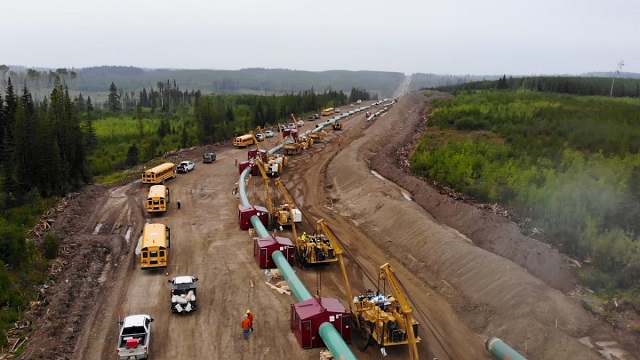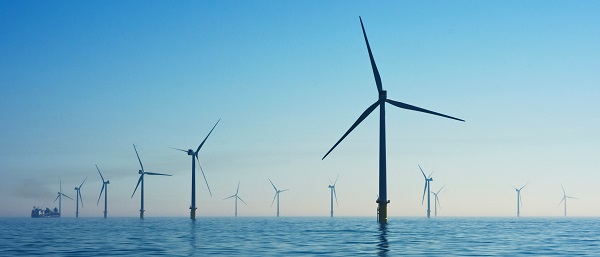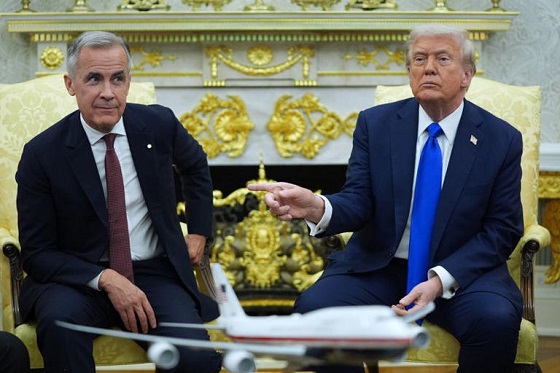New pipelines already proving their worth
It may have taken a decade, but Canada’s Asia Pacific Gateway now has two new pipelines providing egress for Canadian oil and natural gas to Asia. They are already adding billions to the Canadian economy. TMX alone has added $13 billion to the Alberta economy just in its first year of operation, according to one economist.
One year after Alberta crude started sailing to Asia via an expanded Trans Mountain pipeline and export terminal in Burnaby, Canadian natural gas is also now making its way to Asia, via the Coastal GasLink pipeline and LNG Canada export terminal in Kitimat. On June 30, the first LNG carrier loaded with liquefied Canadian natural gas left Kitimat. To date, half a dozen LNG carriers have loaded up in Kitimat. LNG Canada expects to load one LNG carrier every two days.
In the past, lumber and metallurgical coal have been B.C.’s two most valuable export commodities. By 2026, I wager natural gas will surpass both commodities to become B.C.’s most valuable export. It’s a little too early to tell just what kind of uplift LNG exports will give to B.C. and Alberta’s oil and gas sector, but if TMX is any indicator, it should be substantial. The economics math here is pretty simple. In 2024, half of the natural gas produced in Canada was sold to the U.S. at a price of $2.50 per gigajoule ($2.63 per MMBtu), according to the Canadian Energy Regulator.
The Japan-Korea Marker for LNG prices in Asia, by contrast, is about $15 per MMBtu. So Canadian natural gas sold in Asia is currently worth about six times more than pipeline exports to the U.S. Like Alberta crude oil, Canadian natural gas producers have been selling natural gas at a steep discount to the U.S. For oil, the differential has narrowed, thanks to the Trans Mountain pipeline expansion, according to Charles St-Arnaud, senior economist for Alberta Central. St-Arnaud estimates the price differential between Alberta and American oil has narrowed by about US$8 per barrel, since TMX was commissioned. He estimates this narrower spread has increased revenues by US$9 billion ($13 billion Canadian). “This means that the reduction in the oil discount has boosted oil revenues by about 10 per cent,” St-Arnaud concludes. St-Arnaud estimates this will boost revenues to the Alberta government by $5.3 billion.
The $40 billion question now is whether the Coastal GasLink pipeline and LNG Canada export terminal will provide the same economic uplift for B.C. that TMX has for Alberta. The B.C. government is banking on it. Budget 2025 projects natural gas royalties will double — from $576 million in 2024-25 to $920 million in 2025-26, and $1.2 billion in 2026-27. Heather Exner-Pirot, director of energy, natural resources and environment for the Macdonald-Laurier Institute, notes that even the Globe and Mail‘s editorial board has recently raised flags over B.C.’s massive $208 billion debt and worsening debt-to-GDP ratio. The taxes and royalties from LNG exports will provide important new revenues for B.C. “Your best hope for digging out some of that hole is natural gas exports,” she said.
There is currently such an over-supply of natural gas in Western Canada right now that it may take a while before we start seeing the kind of lift to B.C. gas that TMX gave to Alberta oil. Jackie Forrest, executive director of ARC Energy Research Institute, recently noted that, in 2024, Canadian natural gas sold for “about one-half of the U.S. price — effectively giving it away.” She estimates that, even if Canadian natural gas prices rise just $1 per gigajoule, as a result of new access to tidewater, “producers would gain an additional $7 billion per year.” “And this doesn’t even factor in the additional growth in gas and liquids production that new export terminals can unlock.”
In a recent ARC Energy Research Institute podcast with Mark Fitzgerald, CEO of Petronas Canada — LNG Canada’s second largest shareholder — estimated LNG Canada exports will be worth $2 billion a year to the B.C. economy. “Over the life of the project or the planning cycle that we use, that’s almost ($90 billion) in cumulative government revenue just to the government of British Columbia,” Fitzgerald said. He added: “That development, LNG Canada 1, with the upstream will create more than 100,000 jobs potentially annually across British Columbia.”
That’s just phase 1. The current output of LNG Canada — 14 million tonnes per annum (MTPA) — would double, if the LNG Canada partners sanction a phase 2 expansion. The construction of the Coastal GasLink pipeline facilitated two LNG export projects — LNG Canada and Cedar LNG. But we need another natural gas pipeline to fully exploit our abundant natural gas resources and get full value for them. The next large project in the queue is Ksi Lisims LNG and the associated Prince Rupert Gas Transmission (PRGT) pipeline. This project would add another 12 MPTA of export capacity, not to mention tens of thousands of jobs.
In 2020, the Conference Board of Canada projected Canadian LNG exports could increase Canada’s GDP by $11 billion per year, generate $2 billion a year in additional taxes and royalties, and create 100,000 additional jobs. Had we listened to the critics, who said there would be no market in Asia for Canadian oil and natural gas, and had we not built TMX and CGL, we would still be hostage to a single customer, the U.S., for our oil and gas. We would have foregone tens of billions of dollars in investments, revenue and jobs.
We will certainly hear the same arguments against PRGT and Ksi Lisims that we heard against CGL And LNG Canada. Let’s ignore them this time around, shall we?
Related


















